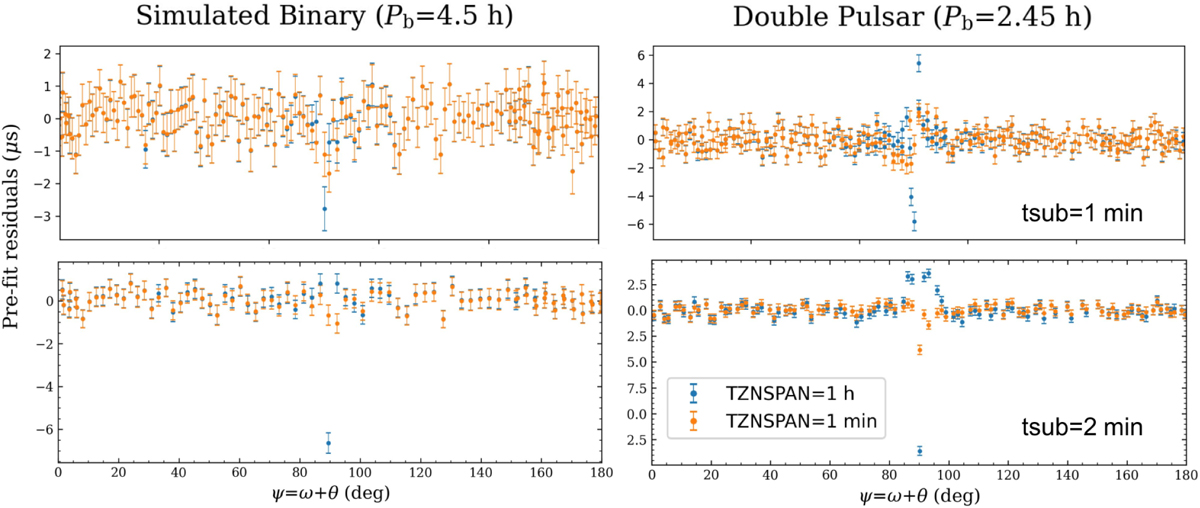Fig. 17

Download original image
Timing residuals of the simulated data files as a function of the orbital phase. A fictional binary with orbital period Pb = 2.45 h is shown on the left and the Double Pulsar is shown on the right. For all cases the original time resolution of the generated data files is TZNSPAN=1 min. Results with the originally installed 1-min resolution ‘polyco’ predictor are in orange, while in blue colour the results with re-installed ‘polyco’ with TZNSPAN=1 h resolution are shown. The upper panel shows the residuals after folding the originally generated fits files and reducing the time resolution by a factor of 60 (so that the resultant time resolution of the files is 1 min). The bottom panel is the same, but the time-averaging factor is 120 (2 min). The spiky features at phase ~0.25 represent limitations of the ‘polyco’ predictor, and become more pronounced as the time resolution of the predictor deteriorates and the sub-integration time (‘tsub’) increases. The effect is amplified for more relativistic binaries.
Current usage metrics show cumulative count of Article Views (full-text article views including HTML views, PDF and ePub downloads, according to the available data) and Abstracts Views on Vision4Press platform.
Data correspond to usage on the plateform after 2015. The current usage metrics is available 48-96 hours after online publication and is updated daily on week days.
Initial download of the metrics may take a while.


